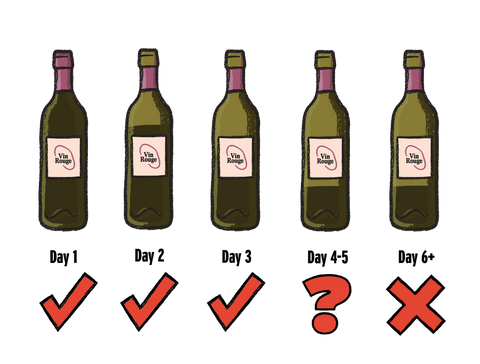Pét-Nat Wines: The Natural Sparkling Wine Revolution
Pétillant naturel (pét-nat) wines represent one of the oldest methods of making sparkling wine, yet they're leading a modern revolution in natural winemaking. This ancestral method produces unique, often cloudy sparklings that capture the raw essence of both grape and place.
What is Pét-Nat?
Pétillant naturel, meaning "naturally sparkling" in French, is made using the méthode ancestrale (ancestral method):
- Single fermentation process
- Bottled before primary fermentation completes
- Fermentation finishes in bottle
- Natural carbonation from fermentation
- Usually unfined and unfiltered
Historical Context
Ancient Origins
- Predates Champagne method
- Originally from Limoux, France
- Traditional peasant wine
- Developed before temperature control
- Historically inconsistent results
Modern Revival
- Natural wine movement catalyst
- Australian adoption growing
- Minimal intervention approach
- Artisanal production focus
- Experimental attitudes
Production Method
Key Steps
- Harvest decisions crucial
- Begin primary fermentation
- Monitor sugar levels carefully
- Bottle at precise sugar level
- Complete fermentation in bottle
- Optional disgorgement
Technical Considerations
- Sugar level monitoring
- Temperature control
- Yeast health
- Bottle pressure
- Timing precision
Australian Pét-Nat Scene
Popular Regions
- Adelaide Hills
- McLaren Vale
- Yarra Valley
- Tasmania
- Margaret River
Local Innovation
- Indigenous grape varieties
- Experimental blends
- Unique production techniques
- Small-batch production
- Seasonal releases
Grape Varieties
Traditional Choices
- Chardonnay
- Pinot Noir
- Chenin Blanc
- Gamay
- Muscat
Australian Innovations
- Vermentino
- Fiano
- Nero d'Avola
- Grenache
- Semillon
Characteristics
Appearance
- Often cloudy
- Natural sediment
- Variable fizz
- Range of colours
- Living wine evolution
Flavour Profiles
- Fresh fruit
- Wild yeast notes
- Bread characters
- Natural acidity
- Raw grape expression
Texture
- Gentle bubbles
- Creamy mousse
- Variable pressure
- Textural complexity
- Alive on the palate
Serving Suggestions
Temperature
- Serve well chilled (6-8°C)
- Allow to warm slightly
- Watch sediment settling
- Gentle handling
- Consider angle when pouring
Glassware
- White wine glasses
- Universal glasses
- Avoid flutes
- Clean, clear glass
- Room for bubbles
Food Pairing
Perfect Matches
- Fresh seafood
- Light appetizers
- Soft cheeses
- Asian cuisine
- Street food
Australian Context
- Fish and chips
- Oysters
- Beach picnics
- Casual dining
- Food truck fare
Storage Considerations
Key Points
- Store upright
- Keep cool
- Drink young
- Watch pressure
- Handle gently
Challenges
- Variable stability
- Pressure changes
- Temperature sensitivity
- Sediment management
- Evolution in bottle
The Natural Wine Connection
Philosophy
- Minimal intervention
- Indigenous yeast
- No additives
- Organic practices
- Raw wine expression
Appeal
- Authenticity
- Sustainability
- Artisanal production
- Unique character
- Living wine
Consumer Guide
What to Expect
- Variation between bottles
- Natural sediment
- Evolution in glass
- Different to traditional sparklings
- Unique drinking experience
How to Approach
- Embrace variability
- Accept cloudiness
- Appreciate uniqueness
- Explore different styles
- Share the experience
Visit Our Cellar Door
At McLaren Vale Cellars, we celebrate pét-nat wines that showcase:
- Local grape varieties
- Seasonal releases
- Experimental styles
- Natural winemaking
- Artisanal production
Production Challenges
Winemaker Considerations
- Sugar level precision
- Fermentation monitoring
- Pressure management
- Stability concerns
- Timing decisions
Quality Control
- Bottle variation
- Sediment management
- Storage conditions
- Transportation care
- Service education
Future Trends
Industry Development
- Growing production
- Style refinement
- Technical improvements
- Market education
- Consumer acceptance
Consumer Evolution
- Style understanding
- Quality recognition
- Serving knowledge
- Storage awareness
- Appreciation growth
Understanding Labels
Key Information
- Production method
- Grape varieties
- Vintage variation
- Serving suggestions
- Storage advice
Style Indicators
- Natural wine designation
- Ancestral method notation
- Cloudiness warning
- Sediment expectation
- Drinking window
Remember, pét-nat wines offer a unique glimpse into traditional winemaking with a modern twist. Their naturally sparkling character and minimal intervention approach provide an authentic wine experience that connects drinkers with both history and innovation.




Comments (0)
There are no comments for this article. Be the first one to leave a message!